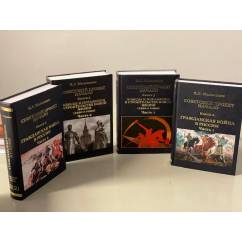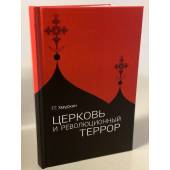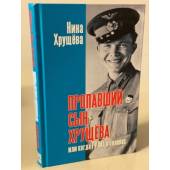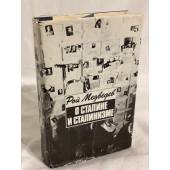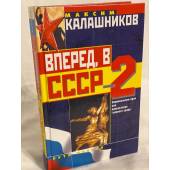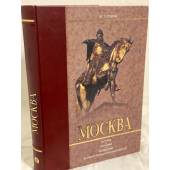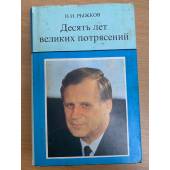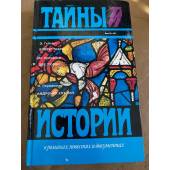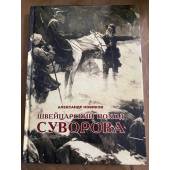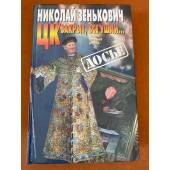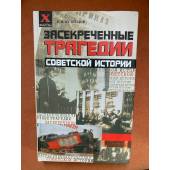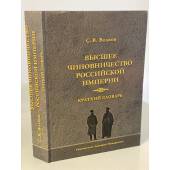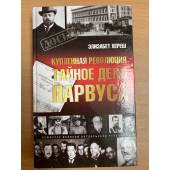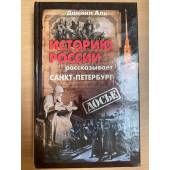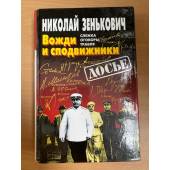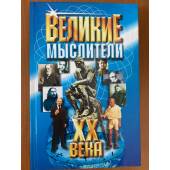
No products
Product successfully added to your shopping cart
There are %d items in your cart. There is 1 item in your cart.

Categories
- Albums (2088)
- Antique (before 1850) old books (before 1941) (592)
- Art and culture (5337)
- Audiobooks, compact discs (CD) (121)
- Autographed books (249)
- Board games (19)
- Books for school (4567)
-
Books in foreign languages
(8328)
- Books in Altai (4)
- Books in Azerbaijani (47)
- Books in Belarusian (46)
- Books in Bulgarian (2)
- Books in Dutch (2)
- Books in English (6492)
- Books in Estonian (10)
- Books in Finnish (7)
- Books in French (43)
- Books in Georgian (37)
- Books in Greek (2)
- Books in Hungarian (6)
- Books in Italian (12)
- Books in Japanese (7)
- Books in Karelian (3)
- Books in Kyrgyz language (6)
- Books in Latvian (46)
- Books in Lithuanian (8)
- Books in Norwegian (4)
- Books in Polish (13)
- Books in Portuguese (2)
- Books in Slovak (2)
- Books in Spanish (17)
- Books in Swedish (3)
- Books in Tajik (34)
- Books in the Adyghe language (3)
- Books in the Balkar language (8)
- Books in the Bashkir language (73)
- Books in the Buryat language (5)
- Books in the Kalmyk language (8)
- Books in the Karachai language (1)
- Books in the Komi language (5)
- Books in the languages of the peoples of the Caucasus (7)
- Books in the Mari language (17)
- Books in the Mokshan language (1)
- Books in the Mordovian language (3)
- Books in the Nogai language (1)
- Books in the Tatar language (101)
- Books in the Udmurt language (10)
- Books in the Yakut (Sakha) language (27)
- Books in the Yarzyan language (2)
- Books in Ukrainian (981)
- Books in Uzbek (9)
- Chuvash language books (29)
- Kazakh language books (8)
- Business. Economy (1604)
- Calendars (41)
-
Children's Literature
(10225)
- Books for parents (356)
-
Children's creativity and leisure
(897)
- Children's games. Experiments and experiments (16)
- Coloring pages (12)
- Crafts, cooking for children (6)
- Drawing for children (11)
- Make with your own hands (29)
- Modeling, application (7)
- Organization of children's parties (2)
- Origami, paper craft (5)
- Puzzles, crosswords for kids (8)
- Questionnaires, diaries, albums (1)
-
Educational and educational literature for children
(1673)
- Attention. Imagination. Memory (27)
- Basic security (4)
- Creative development (46)
- Foreign languages (102)
- General development. Manuals, reference books (81)
- General preparation for school (45)
- Introduction to the outside world (69)
- Logic. Thinking (32)
- Math and counting (42)
- Teaching reading and writing (91)
-
Educational literature for children
(769)
- Biographies for children (38)
- Books for boys (21)
- Books for girls (18)
- Culture, art, religion (48)
- Encyclopedias, reference books and other educational literature for children (182)
- History for children (85)
- Nature and the environment (242)
- Psychology. Etiquette (12)
- Science, technology, transport (54)
-
Fiction for children
(4277)
- Books for kids (113)
- Books on cartoons and films. Comics (91)
- Detectives and adventures for children (193)
- Foreign prose for children (316)
- Myths. Legends. Historical prose for children (74)
- Poetry for children (146)
- Russian prose for children (417)
- Science Fiction, Fantasy and Horror for Kids (121)
- Tales (507)
- Tales and stories about animals (144)
- Soviet children's books (910)
- Toy books (40)
- Collected works. Multivolume editions (3682)
- collection sets (54)
- Comics (54)
- Cookery (1328)
- Dictionaries. Phrasebooks (1330)
- Electronic books (10)
- Encyclopedia (1030)
- Engravings (7)
- Feng Shui (112)
- Fiction (84214)
- German and Germany (34769)
- gramophone records, vinyl (132)
- Guides (2042)
- Healthy lifestyle. Healthy eating. Fitness (1802)
- History (9748)
-
House. Life. Leisure.
(7620)
- Dom. Life (3139)
- Erotic books, books about sex, kamasutra (194)
- Hobby. Leisure (1660)
- Reference Literature (2143)
-
Sport
(946)
- Aerobics. Fitness. Yoga. Dancing (31)
- Board games (158)
- Combat and martial arts (82)
- Extreme sports (12)
- Gymnastics. Light and weightlifting (8)
- Olympic Games (13)
- Other sports (51)
- Physical culture and sport (73)
- Self-defense. Survival (20)
- Sport games (23)
- Tourism (85)
- Water sports (28)
- Winter sports (18)
- Kits (different books) (139)
- Kits (magazines) (60)
-
Magazines and newspapers
(2558)
- Architecture, interior (9)
- Astrology, esotericism (39)
- Bills (233)
- Calendars 2020 (1)
- Calendars 2021 (3)
- Cars, hunting, fishing (14)
- Celebrities, ZhZL (34)
- Children's magazines (12)
- Computer, technology (4)
- Cooking and Recipes (25)
- Crosswords, Scanwords (2)
- Editions with TV program (133)
- Entertainment magazines (7)
- Fashion, style, beauty (17)
- History (111)
- Hobbies, interests (104)
- Home, family, leisure (75)
- House, garden, vegetable garden (34)
- Literature, theatre, music (235)
- Magazines for men (212)
- Magazines for parents (2)
- Magazines for women (108)
- Medicine, health (153)
- Religion (10)
- Russian press abroad (480)
- Science, technology, fantasy (168)
- Sewing, knitting, needlework (8)
- Society, politics (638)
- Special Editions (57)
- Travel, countries (14)
- Maps, atlases (654)
- Military business. Weapons. Special services (3896)
- Miniature books (164)
- Music. Sheet music (1008)
- Postage stamps (92)
- Postcards (191)
- Posters (37)
-
Professional, educational literature
(24560)
-
Applied sciences. Technique
(2512)
- Agriculture. Veterinary medicine (41)
- Architecture (360)
- Chemical industry (104)
- Construction (445)
- Design (136)
- Energy (68)
- Engineering. Instrumentation (184)
- Food industry (19)
- Jewellery (23)
- Life safety (46)
- Light industry (39)
- Metallurgy (28)
- Mining (83)
- Nanotechnologies (5)
- Oil and gas industry (53)
- Other industries (101)
- Polygraphy (8)
- Radio engineering. Electronics. Communication (263)
- Technical Sciences (330)
- Technology of production (100)
- Timber and wood chemical industry (13)
- Transport (183)
-
Computer Literature
(478)
- Administration. Information security (5)
- Computer for … (16)
- Computer networks. Internet (23)
- Databases (8)
- Design systems (CAD/CAM) (1)
- General questions (41)
- Graphics, design, multimedia, games (27)
- Hardware (4)
- Informatics (27)
- MS Office. Microsoft office programs (11)
- Operating systems (12)
- PC work for beginners (18)
- Programming languages and environments (37)
- Humanities (8827)
-
Legal Literature
(978)
- Civil law (54)
- Civil procedural law. Judiciary (8)
- Comments (12)
- Constitutional law. Administrative law (30)
- Criminal law (40)
- Criminology. Criminalistics (37)
- Customs law (8)
- Financial law (11)
- International law (34)
- Labor law. Social security law (9)
- Land law. Environmental law (3)
- Law enforcement agencies (23)
- Law in general. History and theory of state and law (29)
- Other branches of law (23)
- Regulatory acts. Reference literature (19)
- Right in everyday life (17)
- Textbooks and teaching aids (43)
- Workshops and practical aids (6)
-
Medicine and Health
(2433)
- Applied Medicine (44)
- Clinical Medicine. Internal Medicine (22)
- Cosmetology (22)
- Fundamentals of Medicine. Healthcare System (27)
- General pathology. General therapy (25)
- Narcology (12)
- Nervous system (29)
- Other branches of medicine (90)
- Pediatrics (51)
- Pharmacology. Toxicology (21)
- Popular and alternative medicine (1135)
- Psychiatry. Neuropathology. Sexopathology (71)
- Surgery (18)
- Monographs (1111)
- Natural sciences. Mathematics (2223)
- Social Sciences (5535)
-
Applied sciences. Technique
(2512)
- Religion. Esotericism (6319)
- Russian Abroad (books published abroad) (2600)
- Russian language (775)
- Russian language for children (Textbooks) (155)
- Soviet books until 1992 (12996)
- Yoga Books (161)
- Show All
Советский проект. Начало. В 3 книгах. Книга 2 (1 и 2), книга 3 (1 и 2)
185868
New
Item 1
4 kg
Sale the same product...More info
Book 2. The Civil War in Russia (Part 1) In the second book of the trilogy, the main problems of the history of the Civil War are considered, the periodization and chronology of the war are presented, the main events on the fronts are revealed, and the characteristics of the opposing armed formations are given. The first part of the book is eventful, priority attention is paid not to chronological locations, but to the essence of the processes that influenced the implementation of the Soviet project in the future. The role of the "third force" that fought for itself and against everyone else, the forceful confrontation on the national outskirts of the former Russian Empire, is rethought in a new way. The book is intended for specialists, students and a wide range of readers. UPDATE OF THE PAST The study of history is an ongoing process. Despite the fact that for at least a century and a half - since the middle or the second half of the 19th century - the consideration of the past has been claiming to be scientific, and therefore to be provable and verify research interpretations, none of the problems of past eras can be considered completely dismantled, closed and exhausted. This applies both to very ancient times and to recent events. Actually, this is probably why voices are heard from time to time calling for not considering history as a science - they say, what kind of science is this, in which there are no generally accepted opinions and emerging assessments are necessarily revised sooner or later? Most likely, such a dispute - the science of history or not - is also a specific and indispensable attribute of our comprehension of the past, and a permanent reconfiguration of focus on what has been and gone should simply be considered one of the specific features of the scientific understanding of history. Much more important is another question - who exactly is engaged in such a reconfiguration of established concepts? If this concerns only professionals, then, apparently, here we are dealing with the usual search motivation inherent in absolutely any branch of knowledge. Such motivation is a specific thing, but quite natural and even necessary for representatives of the corporation of historians. But it is a completely different matter when the past begins to worry those who do not belong to this corporation, but nevertheless consider it necessary to speak out about the events that took place in the foreseeable or not very visible retrospective, and take it from the standpoint of their own experience - as just life and professional. At the same time, the lack of special education and well-developed skills of academic explanation of the past often work not to the detriment, but rather to the benefit: people who have taken place in other areas of activity demonstrate not an amateurish, but quite a mature understanding of historical processes. This book is proof of that. Its author is Vladislav Malkevich, a high-class manager who, at the peak of his career, actually held a ministerial position, leading the Federal Service for Currency and Export Control, and in the difficult situation of default in the late 1990s, in the anti-crisis cabinet of Yevgeny Primakov. And if a professional of this level suddenly plunges into the study of the Civil War, which blazed a century ago in the vastness of our country, then, apparently, he has something to say about this difficult and difficult period - precisely as a manager, a specialist in mobilization guidance order in such a delicate area as the maintenance of the "valves" through which the country communicates with the rest of the world. Hence it is quite natural that the history of the Civil War, reassembled and reinterpreted by Vladislav Malkevich, is not only a new picture of what the country experienced a hundred years ago, but also a kind of actualization of this past, namely, the recognition in the historical fabric of certain constants of national social life, which manifest themselves whenever our society finds itself in a crisis situation, which, if we talk about the situation at the end of the 20th century, the author knows firsthand. And in this sense, Vladislav Malkevich's book can be perceived as a historically justified warning. The most important observation in this regard is made already on the first pages of the book, where the author reflects on the historically inherent in our society, the craving for internal conflicts. Indeed, discord and strife have always manifested themselves with greater or lesser force in the history of Russia, and the Civil War at the dawn of the Soviet era is by no means an exception here, but a natural phenomenon for this crisis time. It is quite obvious that in this case the author assesses what happened in 1918-1920 through the prism of what was brewing, but, fortunately, did not break through in the late 1990s. With all the conventionality and sometimes incorrectness of historical analogies, such a reading of the Civil War, at least, deserves attention, including from professional historians. In a similar way, one can evaluate the behavioral classification given in the book of the main subjects of the Civil War - the Reds, the Whites, and the so-called third force. In fact, the author, relying on rich historical material, speaks of three models of action - winners, losers and failed ones - and does this again with an eye on that transit time when he happened to be involved in determining the real political process. Vladislav Malkevich comes to interesting conclusions, which for some reason are not articulated by academic science in such a clear and obvious presentation. Thus, he sees the main reason for the success of the winners (Reds) in their ability to subtly capture the dominant social demand and work for its implementation in the mode of extreme mobilization, which goes even against common sense, often guided not by logical arguments, but by intuitive sensations. Two decades ago, the country almost fell into the abyss, but managed to stay on the edge. Another thing is that the victors in a civil conflict should not be "dizzy from success." The Bolsheviks did not succeed in this - their sense of reality began to betray them immediately after the breaking of the resistance of their opponents. This important lesson needs to be learned by those who today consider themselves winners and monopoly owners of the only correct understanding of the scenario for further development. Vladislav Malkevich sees the historical experience of the defeated (whites) no less instructive. The author's observation that legitimism in itself - at least in Russian realities - is not an impeccable position that guarantees success is exceptionally apt. When legitimism becomes a dogma, a schema divorced from real life, it creates a dangerous illusion that is disorienting and ultimately doomed to failure. Post-Soviet history is also replete with examples where blind adherence to stereotypes, including legal and even constitutional ones, while refusing to take into account the real socio-political alignment, eliminated the original force that any establishment rooted in legal culture a priori has. Finally, the historical experience of the failed alternative of the two main opposing forces in the Civil War is also instructive. In the image of the author, the “third force” in the context of an internal civil conflict is a fiction, a myth, since this “third force” inevitably collides with those who at the moment are most capable of saddling the historical challenge to the country and its future. Fortunately, in our time, games with a "third force" are already yesterday. They remained in the 1990s and seem unlikely to be repeated again in one form or another. In a word, the book is a look at the past not of a historian, but of a true professional in another field, and this look, unlike the opinions of many for whom work with the past is their main craft, turns out to be not only true, but also relevant to life, demonstrating the inextricable genetic link between history and modernity, as well as the didactic significance of what was, for what we are experiencing now. This is exactly how our understanding of history should be. Doctor of Historical Sciences Professor Andrey Venkov Book 2 The Civil War in Russia (Part 2) The second part of the book about the Civil War is devoted to the fate of its direct participants - commanders, organizers of military construction, detachment commanders, officers and atamans. Their amazing biographies, recreated on the basis of numerous sources, make it possible to understand the motives that led historical figures, and their very division into reds, whites and "greens" sometimes turns out to be conditional. The reader has the opportunity to peer into the faces of dissimilar people of that era in order to form his own idea of the camps that formed in Russia during the Civil War. The book is intended for specialists, students and a wide range of readers. Book 3. Victories and defeats in the construction of a new life (1920s). Part 1 The first part of the book, which completes the trilogy, analyzes the challenges associated with the crisis of the military-communist system and the end of the Civil War, the processes of Sovietization of the outskirts of the former empire, the formation of a new political regime and the formation of the USSR. The problems of transition to the new economic policy, its forms and mechanisms of implementation are rethought. The book is intended for specialists, students and a wide range of readers. CONTENT In memory of a statesman, scientist, friend INTRODUCTION Chapter 1 THE CRISIS OF THE SYSTEM: DOGMATIC SCHEMATISM AND REAL CHALLENGES § 1. Agrarian policy of the Bolsheviks § 2. Economic transformations in industry § 3. Nationalization of banks § 4. Foreign policy and foreign economic relations of the RSFSR § 5. National crisis Chapter 2 SOVIETIZATION OF FORMER RUSSIAN EMPIRE OUTSIDES § 1. The formation of Soviet power in Belarus § 2. Return of Ukraine § 3. Sovietization of Moldova § 4. The thorny path of the North Caucasus § 5. Republics of Transcaucasia § 6. The formation of Soviet power in Central Asia Chapter 3 SOVIET MODEL OF GOVERNMENT § 1. New political regime § 2. Discussions about the principles of the union state § 3. Case Mdivani § 4. Formation of the USSR Chapter 4 GEOPOLITICAL CONTEXT OF THE SOVIET EXPERIMENT § 1. The Versailles-Washington system and the Soviet factor in foreign policy § 2. The first successes of Soviet diplomacy § 3. Band of recognition of the USSR in the world § 4. Comintern § 5. I.V. Stalin and the new foreign policy vector Chapter 5 TRANSITION TO ADMINISTRATIVE MARKET ECONOMY § 1. Scientific development of the problems of introducing the NEP § 2. Search for ways out of the national crisis § 3. Formation of the economic mechanism of ne-pa § 4. Restoration of the institution of property and a new way of life § 5. Cooperative movement § 6. Revival of commodity-money relations NAME INDEX Book 3. Victories and defeats in the construction of a new life (1920s). Part 2 In the second part of the book that concludes the trilogy, the author examines in detail the reasons for the failure and the process of curtailing the new economic policy, as well as the main directions for the transformation of the social sphere, the cultural policy of the Bolsheviks and the birth of Soviet literature and art. The book is intended for specialists, students and a wide range of readers. CONTENT Chapter 1 THE ECONOMY OF THE FUTURE IN THE DISCUSSIONS OF THE 1920s § 1. The split among politicians and economists § 2 Achievements and failures of the NEP § 3 Collapse of the NEP. "Emergency" § 4 The experience of NEP and modernity Chapter 2 THE NEW SOCIAL POLICY OF THE BOLSHEVIKS § 1. Social sphere in the first years of Soviet power § 2. Patronage of the city over the village § 3. Measures to normalize the situation on the labor market § 4. Housing policy § 5. Soviet catering system § 6. Health care § 7. Protection of motherhood and childhood. Help for homeless children § 8. Insurance business Chapter 3 CULTURAL DIMENSIONS OF THE SOVIET PROJECT § 1. Education § 2. Natural and applied sciences § 3. Social sciences § 4. The displacement of the "white" scientific intelligentsia § 5. Proletcult § 6. Librarianship § 7. Museum business Chapter 4 SILVER AGE OF RUSSIAN CULTURE § 1. Genesis of the Silver Age § 2. Cinema § 3. Literary creativity § 4. Classical music § 5. Visual arts § 6. Architecture § 7. Approval of the ideas of all art Chapter 5 SHARDS OF THE SILVER AGE AND SOVIET ART § 1. Soviet cinema § 2. Circus art § 3. Literary creativity in the service of the revolution § 4. New searches in the visual arts § 5. New architecture § 6. Innovative theater § 7. Soviet musical art § 8. Soviet reality in photography CONCLUSION AFTERWORD TO THE TRILOGY "Soviet project: the beginning" NAME INDEX
Data sheet
| Publisher | М.: АИРО-XXI |
| Publication date | 2019-2020 |
| Number of Pages | 2944 |
| Book series | СОВЕТСКИЙ ПРОЕКТ: НАЧАЛО. В 3-х книгах |
| Bookbinding | Hardcover |
All author\'s books:
Seller Info/Map |
Seller type: Company (business)
Подробнее
Volbedingstr. 2 A2-03
Leipzig, 04357
Germany
03416870612








